 Aide memoire to the Minister of Statistics:
Meeting with Professor Juliet Gerrard
Date
Aide memoire to the Minister of Statistics:
Meeting with Professor Juliet Gerrard
Date
4 June 2020
Note by
5 June 2020
Priority M
Will be
Meeting on 5 June at XX
discussed at Attendees:
Professor Juliet Gerrard
Purpose and key issues
1. This document supports your discussion about the relationship between the Data Ethics
Advisory Group (the Group) and the Digital Council for Aotearoa New Zealand (the Digital
Council) with the Prime Minister’s Chief Science Advisor and Chair of the Group, Professor Juliet
Gerrard.
Background
2. The Group was convened in 2019 by the Government Chief Data Steward to help maximise the
opportunities and benefits from new and emerging uses of data, while responsibly managing
potential risk and harms.
3. The Group’s purpose is to provide wider system and societal thinking about factors that affect
new or emerging uses of data, including those issues which have the potential to affect the
government data system, by:
providing fresh thinking and suggestions for how New Zealand's current data system may
be changed and improved;
encouraging the innovative and ethical use of data in government;
working in a constructive, collaborative, and open manner;
reflecting the principles of Te Tiriti o Waitangi; and
helping build consensus and support needed to bring about change.
4. In practice, government agencies bring specific work items and initiatives to seek advice from
the group in relation to ethical consideration.
5. The group have held four meetings to date and thus far, the items brought have been relatively
well progressed (for example, the Data Ventures Population Density tool and Education Equity
Index proposal).
Interest in bringing submissions to the Group has been steady
6. Currently, the Group has a small backlog of submissions to work through and enquiries about
meeting with the Group have increased lately, including by agencies that would not normal y be
seeking external advice around data ethics, such as the NZSIS and the New Zealand Police.
7. As the Group becomes more widely recognised and provides more guidance, we anticipate that
demand for meeting with them will continue to grow.
8. The Group have also commissioned and wil soon publish several papers reviewing the
development of ethical frameworks and principles internationally. These papers are due to be
published on data.govt.nz next week – week of 8th June.
A review of the Group wil allow us to explore potential changes and improvements
9. A review of the Group’s operation is due to begin shortly, considering lessons learned from its
first year of operation. The review will incorporate the perspectives of current Group members
and seek the views of government agencies.
In confidence
10. The review wil also consider questions around the scope and authority of the Group, based on
the feedback of a range of stakeholders relating to advice provided in the preceding year. This
wil likely consider whether a Treaty perspective is adequately reflected in the Group’s current
operating model and membership.
11. We understand that Professor Gerard may raise the Group’s view that the advice they provide
should be sent to Ministers, as well as of icials, to support high-level decision making and to
ensure the group has an appropriate level of mana.
12. s (9)(2)(g)(i)
this option wil be considered as part of the formal review
process. In the event that this option is selected, a formal agreement by Cabinet may be needed
to set the expectations across government and to secure the level of resources necessary to
support the ongoing operation of the group.
The Group complements the new Digital Council 13. You and Minister Faafoi announced the Digital Council, chaired by Mitchell Pham, in early 2020.
14. The purpose of the Digital Council is to advise the Government on how to maximise the societal
benefits of digital and data-driven technologies to increase equality and inclusivity, wellbeing
and community resilience.
15. The Digital Council has chosen the topic of trust in the context of automated decision-making
as its main deliverable for 2020.
There are opportunities for the Group and Digital Council to connect 16. It would be beneficial for both groups to stay connected and, as appropriate, collaborate on
specific initiatives because the Group has significant subject matter expertise that wil
complement that on the Digital Council.
17. The Digital Council’s first piece of advice on post-COVID-19 digital and data opportunities
highlights the important role of the Group in preserving public confidence from a trust and privacy
perspective.
18. Mitchell Pham has previously indicated a desire for the Digital Council and the Group to work
closely together. How this could work in practical terms wil need to be explored between the
Chairs. Options could include:
the Group – or a subset of the Group – could serve as a reference group to test ideas as
the Digital Council’s main research deliverable progresses; and
workshopping the emerging findings and recommendations with the Group once the
Digital Council’s initial research and engagement is completed in September or October
this year.
19. Moving forward, it would be beneficial for Professor Gerrard and Mitchell to meet to discuss the
work of their respective groups and areas of mutual interest and potential collaboration.
2
 Aide memoire to the Minister of Statistics:
Meeting with Professor Juliet Gerrard
Date
Aide memoire to the Minister of Statistics:
Meeting with Professor Juliet Gerrard
Date
23 Nov 2020
Note by
24 Nov 2020
Priority M
Will be
Meeting on 24 November at 6.30 pm with Professor Juliet Gerrard
discussed at
Purpose and key issues
1. This document supports your discussion with the Prime Minister’s Chief Science Advisor and
Chair of the Data Ethics Advisory Group, Professor Juliet Gerrard.
2. Professor Gerrard has requested this meeting and there is no confirmed agenda. This aide
memoire provides information about two areas we believe Professor Gerrard wil be interested
in discussing: The Data Ethics Advisory Group and the Digital Council, and links between them.
The Data Ethics Advisory Group (the Group)
3. Professor Gerrard is the Chair of the Group and has issued her resignation effective end of
December 2020. This has been done in the context of a planned review of the group after 12
months and creates space to respond to the recommendations of the review in the way that best
fits the new government landscape.
4. The Group was convened in September 2019 by the Government Chief Data Steward (GCDS)
to help maximise the opportunities and benefits from new and emerging uses of data, while
responsibly managing potential risk and harms.
5. The Group’s purpose is to provide wider system and societal thinking about factors that affect
new or emerging uses of data, including those issues which have the potential to affect the
government data system, by:
a) providing fresh thinking and suggestions for how New Zealand's current data system may
be changed and improved;
b) encouraging the innovative and ethical use of data in government;
c) working in a constructive, collaborative, and open manner;
d) reflecting the principles of Te Tiriti o Waitangi; and
e) helping build consensus and support needed to bring about change.
6. In practice, government agencies bring specific work items and initiatives to seek advice from
the Group in relation to ethical consideration.
7. The Group have held six meetings to date and thus far, the items brought have been relatively
well progressed (for example, the Data Ventures Population Density tool and Education Equity
Index proposal).
8. s 9(2)(a)
The planned review of the Group explores potential changes and improvements
9. The consultancy Martin Jenkins reviewed the Group’s operations to ensure that the Group was
achieving its aims and determine if any change was needed to its functions or membership. The
final report was issued to the GCDS in November 2020.
10. The review proposed the following options for changing the focus areas for the Group:
a) Data ethics assurance focus: deepen the data ethics assurance role on behalf of
Government.
b) Trusted advisor focus: strengthen the advisory role for government agencies.
c) System-level advisor focus: widen the role towards providing fresh thinking and insights.
d) Combined areas of focus: combine any or all the above areas of focus.
In confidence
11. The GCDS is processing the recommendations of the review. You wil receive a copy of the final
report with a separate briefing on the future focus and operating model for the Group in due
course.
Future vision for the Group
12. s 9(2)(a)
. s (9)(2)(g)(i)
13. Professor Gerrard may raise the Group’s view that the advice they provide should be sent to
Ministers, as well as officials, to support high-level decision making and to ensure the group has
an appropriate level of mana. This view supports option d listed in paragraph 10.
14. s (9)(2)(g)(i)
If this option
is selected a formal agreement by Cabinet may be needed to set expectations across
government and to secure resources required to support this model.
15. The Chair and members’ resignations provide the opportunity to increase Māori membership to
at least two members – currently there is one representative. The group currently feels that it is
not yet meeting the expectation of fully supporting the principles of te Tiriti o Waitangi.
The Digital Council
16. The formation of the Digital Council (the Council) was announced in early 2020.The purpose of
the Council is to advise the Government on how to maximise the societal benefits of digital and
data-driven technologies to increase equality and inclusivity, wellbeing and community
resilience. Mitchell Pham chairs the Council and is known to Professor Gerrard.
17. The Council has chosen ‘trust and automated decision-making’ as its main deliverable for 2020
and will provide a draft report on this to you later this year.
There are opportunities for the Group and Digital Council to connect 18. It would be beneficial for both groups to stay connected and, as appropriate, collaborate on
specific initiatives because the Group has significant subject matter expertise that wil
complement that on the Council.
19. The Council’s first piece of advice on post-COVID-19 digital and data opportunities highlighted
the important role of the Group in preserving public confidence from a trust and privacy
perspective.
20. The Council presented at the 23 October meeting of the Group. In this meeting the Council Chair
indicated a desire for the Digital Council and the Group to work closely together. It was noted
that how this could work in practical terms wil need to be explored between the Chairs. Options
could include:
a) the Group – or a subset of the Group – could serve as a reference group to test ideas as
the Digital Council’s main research deliverable progresses; and
b) the Group to advise on ethical standards for the Digital Council’s forthcoming report,
particularly around community data sourcing, methodologies and inclusion on automatic
decision making.
c) presenting emerging findings and recommendations from the Digital Council’s Trust and
automated decision-making report with the Group on 3 December (to be confirmed
depending on agenda availability).
21. Moving forward, it would be beneficial for the future Chair of the Group and the Chair of the
Digital Council to discuss the work of their respective groups, areas of mutual interest and
potential collaboration.
2
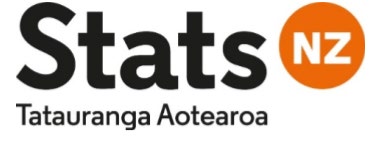 Memorandum:
Examples of Algorithm Charter implementation
Memorandum:
Examples of Algorithm Charter implementation
To:
Hon Dr David Clark – Minister of Statistics
From:
Gareth McGuinness, Senior Manager – Data Strategy and Policy
Date:
28 September 2021
Purpose
1. In August, you asked officials to provide you with six examples of agency implementation of the
Algorithm Charter for Aotearoa New Zealand (the Charter) for your information.
Background
2. You requested six examples of agency implementation of the Charter, including from New
Zealand Police (Police).
3. This aide memoire provides examples from:
Stats NZ
Police
Ministry of Business, Innovation and Employment
Ministry of Social Development
Inland Revenue
Ministry of Justice.
About the Algorithm Charter
4. The Charter, launched in July 2020 (attached as
Appendix 1), provides New Zealanders with
assurance that algorithms used by signatory agencies wil meet commitments regarding
transparency; partnership; people; data; privacy, ethics and human rights; and human oversight.
5. The Charter is voluntary and applies to the public sector only. There are currently 26 signatories
to the Charter (listed in
Appendix 2), and others have recently shown an interest in signing up
to the Charter.
6. Since its inception, the Charter has increased awareness of algorithm use across government.
Some signatory agencies, such as the larger producers and users of data, have well established
algorithm use, mature internal resource capabilities, and have successfully embedded many
aspects of the Charter into their practices. Other signatory agencies have less-established data
and algorithm capabilities and are now thinking more deeply about how their algorithms may
impact individuals or communities.
7. The Charter has had a positive impact across the spectrum – in terms of government agencies’
levels of data maturity and algorithm use – because it has either increased or embedded the key
commitments in an agency’s algorithm practices. The six examples of implementation described
in this paper also reflect how each agency’s data maturity and Charter implementation needs are
different.
Review of the Charter
8. When the Charter was launched, it included a commitment to review the Charter 12 months after
coming into force. Stats NZ has secured an independent provider to review the Charter, which
wil be completed in November 2021.
In confidence
9. While the information in this Aide Memoire provides a sample of actions being taken by some
government agencies, the review wil provide us with a more comprehensive understanding of
agency implementation of the Charter.
10. The review wil focus on helping us better understand the extent to which the Charter has
improved algorithmic transparency among signatories, the successes and challenges faced by
agencies in implementing the Charter, and potential barriers to agencies signing up to the
Charter. The review does not focus on assessing the content of the Charter.
11. The different levels of data maturity across agencies mean dif erent types and levels of support
are required to implement the Charter. The review wil help identify ways that Stats NZ can assist
agencies with implementing the Charter to ensure they are adequately supported and the
Charter’s objectives are being met.
12. Once complete, we wil share the outcome of the review with you.
Examples of agency implementation of the Algorithm Charter
13. The following outlines the actions six agencies have taken to implement commitments of the
Charter.
Stats NZ
14. Stats NZ collects information from people and organisations through censuses, surveys and
administrative data from third parties. It uses this information to publish insights and data about
New Zealand, and supports government agencies, private individuals, and organisations to use
the data. Stats NZ uses algorithms in some statistical production processes. For example, an
algorithm is used in migration statistics to ensure their timely production.
15. Since signing the Charter, Stats NZ has begun work on a maturity assessment to understand
what gaps and issues around algorithm use might exist relating to the Charter. When this is
completed, options to address the gaps wil be developed. Stats NZ intends to publish a report
on its findings and solutions early next year to ensure transparency and to help agencies who
are undertaking similar reviews.
16. While this work is not yet complete, early findings show that Stats NZ has several processes in
place to support transparency. These include:
effective systems to ensure people can ask questions about our statistics and how
they were calculated
the publishing of detailed descriptions of statistical methods for technical users of
statistics.
17. Several gaps have also been identified, including a need to embed a te ao Māori lens in the way
Stats NZ develops and administers algorithms and statistical methods.
Police
18. Technology is rapidly evolving and emergent technologies, including tools such as algorithms,
have an important part to play in modern policing to enable more effective and efficient ways of
working. Police uses algorithms to support a range of policing activities including prevention,
investigation and enforcement – for example to identify suspicious financial activity, to assist with
the prioritisation of investigations, and to support family violence risk assessments.
19. Police has undertaken a number of activities to support its implementation of the Charter. These
include:
embedding a governance framework for algorithms
establishing a formal evaluation structure for algorithm developers
producing algorithm development and approval guidelines – including testing,
monitoring and review processes
2
setting up an Independent Expert Panel, whose role includes peer reviewing
algorithms used by Police to ensure that privacy, human rights and ethics interests
are appropriately safeguarded, and any unintended consequences are identified.
20. Last year, Police commissioned independent consultancy firm Taylor Fry to complete a stocktake
of the algorithms they use, and to provide advice on best practice to ensure the safe and ethical
development and use of algorithms. Following a review of the report by the Independent Expert
Panel, Police has worked to implement the recommendations into its best practice guidelines.
21. To increase transparency with the public, Police has also created a public web page on its work
on new technologies and use of algorithms. This page includes reports, Privacy Impact
Assessments, a list of technologies used by Police and research.
Ministry of Business, Innovation and Employment (MBIE)
22. MBIE is implementing a range of supervised algorithms to enable effective service delivery and
regulation, for example:
Screening for risks at the border by Immigration New Zealand: using Advance
Passenger Information and Passenger Name Record data to assess potential risks
associated with travellers.
Advance Passenger Processing for Immigration New Zealand: the algorithm performs
some validation matching, as well as some automated “border checks” (e.g. checking
that the individual has a valid visa if one is needed, or matching the individual’s
passport against a list of lost or stolen passports).
Predicting the likelihood that a company wil experience liquidation: using the
Companies Register and New Zealand Business Number data, a machine learning
model trained on 2020/21 (post COVID-19 data) predicts the likelihood that a
company wil experience liquidation.
23. Immigration New Zealand has established a data science governance framework and review
board that supports Charter commitments. More widely across MBIE, an environmental scan of
algorithm use was conducted in 2021 and a draft policy has been developed on how the Charter
commitments are to be applied. This includes the provision for an algorithm impact assessment
process. This draft policy has been tested in a workshop with subject matter experts that included
algorithm users, data science thought leaders, and a legal advisor. MBIE expects to roll out the
policy early in 2022. Given the evolving nature of this area and the need to respond to emerging
technologies, MBIE recognises that this policy may need to be reviewed in future.
Ministry of Social Development (MSD)
24. At present, the Youth Service model, which generates referrals for students with a high likelihood
of needing assistance to transition from school, is the only algorithm being used at MSD. This
algorithm was developed using MSD’s Model Development Lifecycle (MDL), which aligns with
the Charter and was specifically created to support the development of operational algorithms.
The MDL includes a governance framework for effective decision making and a separate Data
Science guide for operations. The framework provides decision makers across MSD with
assurance that the technical, legal, ethical and te ao Māori opportunities and risks have been
well managed during the development of an operational algorithm. There are clear sign off
phases and, if the work is particularly complex or sensitive, there is an option to seek external
review. The MDL has been created as an open-source document to ensure other Government
agencies can use and learn from this product.
25. Prior to the Charter, MSD had established a Privacy, Human Rights and Ethics Framework (the
PHRaE) to help consider the privacy, human rights and ethical impacts of using personal
information in its services. These are taken into account by asking the right questions while
designing a service, process or system, so that risks can be identified early on and a mitigation
plan put in place. The need to be transparent and responsible in the use of algorithms is also
covered within the PHRaE and wil be further supported by a proposed Automated Decision-
3
Making (ADM) standard, which also aligns with and references the Algorithm Charter. The
proposed ADM standard is expected to be released for consultation in the near future and wil
include engagement with external stakeholders, such as Stats NZ, the Human Rights
Commission and beneficiary advocates, amongst others.
26. This year, MSD also carried out a high-level stocktake of existing processes to identify which
processes and systems use ADM (including where algorithms are used). The results of the
stocktake indicated where further action may need to be taken to meet the ADM standard and
commitments made under the Algorithm Charter.
Inland Revenue
27. The majority of algorithms implemented by Inland Revenue are in the form of business rules
prescribed in legislation. While some of these business rules are automated to varying degrees,
for example to calculate individual income tax assessments, other algorithms are used to identify
potential tax non-compliance. In all cases, data is analysed to understand its suitability before
being used in these algorithms.
28. Inland Revenue is currently refreshing its data and information governance. This includes
incorporating the Charter into the principles, requirements, and roles and responsibilities in
Inland Revenue’s data and information policy and standards. The Charter commitments are also
reflected in the mandates of the refreshed governance groups. This increases transparency,
oversight, accountability and assurance of how the agency uses data and information.
29. As a part of the data and information governance refresh, staff are being supported in a variety
of ways to do what is right for the data and information Inland Revenue stewards, including its
use of algorithms. This includes new tools and guidance, new and updated processes, and formal
communities of practice for data practitioners. Collectively, this results in staff at Inland Revenue
applying necessary due diligence in the way they work with data and algorithms.
Ministry of Justice
30. The Ministry of Justice (MoJ) has identified three algorithms in operation. Al three algorithms
assist with the process of collecting outstanding fines, reparation or infringements, and have
enabled MoJ to work more efficiently and effectively in these areas. Using the Charter’s Risk
Matrix, all three algorithms have been identified as low risk. To ensure information on algorithms
is publicly available, MoJ has published information on the algorithms it uses on its website.
31. Technology initiatives at MoJ go through a governance process, including a Data Impact
Assessment. To support this assessment, a question has been added related to the potential for
an algorithm to be used – ensuring early identification of potential algorithm use.
Appendices
Appendix 1 – Algorithm Charter for Aotearoa New Zealand
Appendix 2 – List of all current Algorithm Charter signatories
4
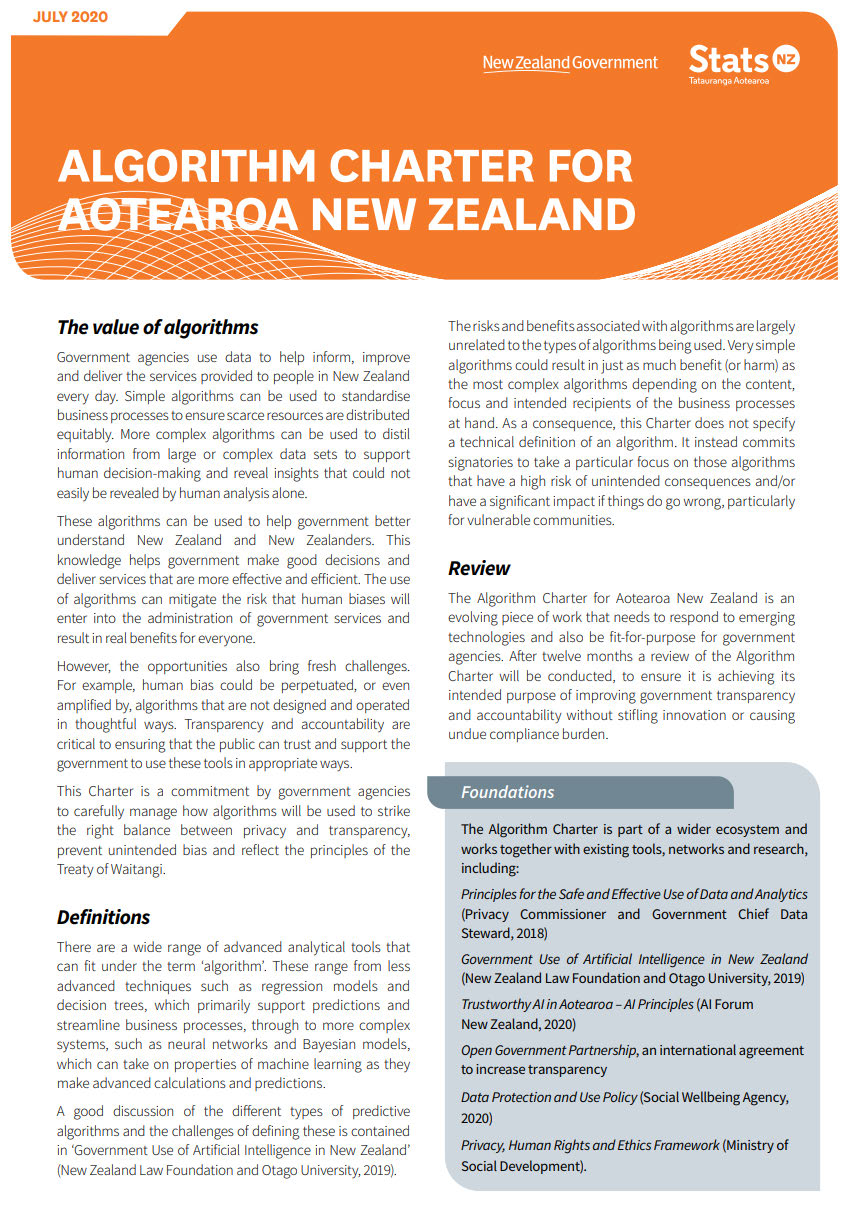 Appendix 1: Algorithm Charter for Aotearoa New Zealand
Appendix 1: Algorithm Charter for Aotearoa New Zealand
5
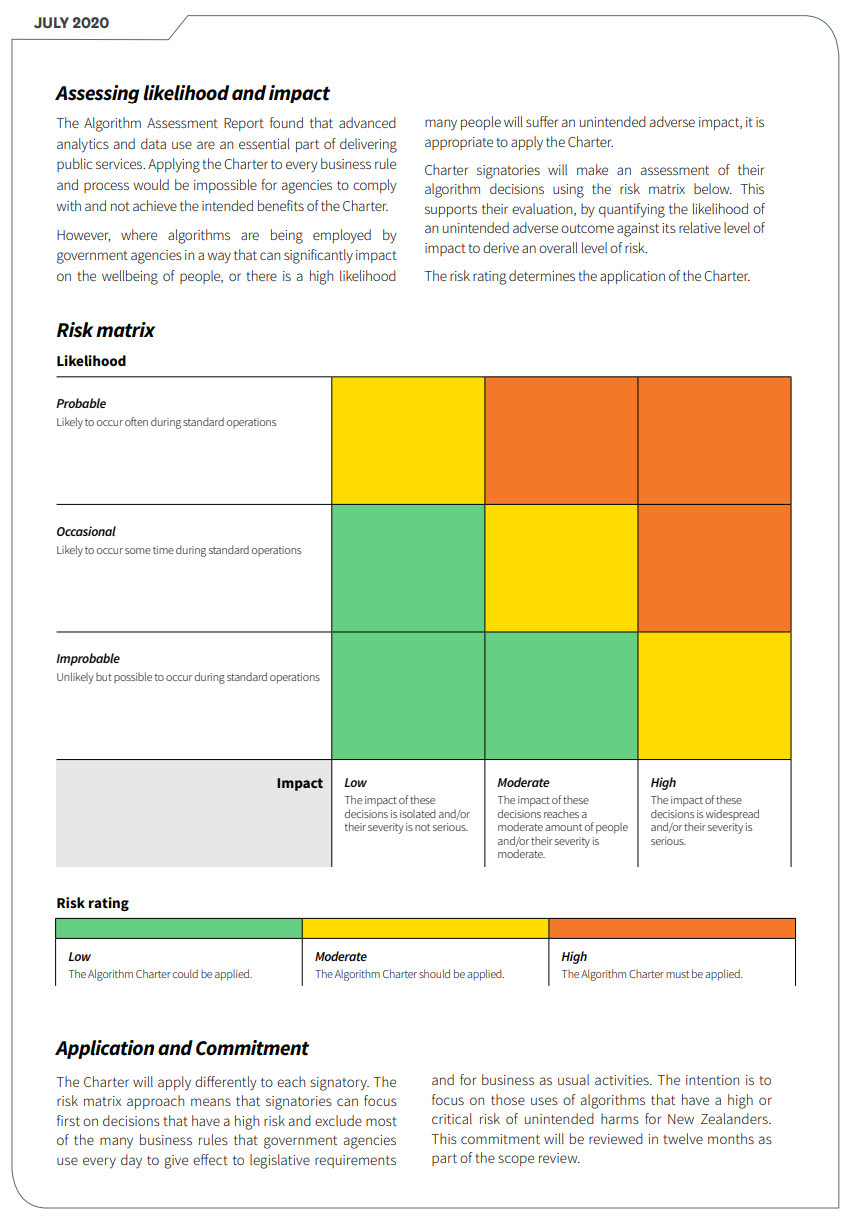
6
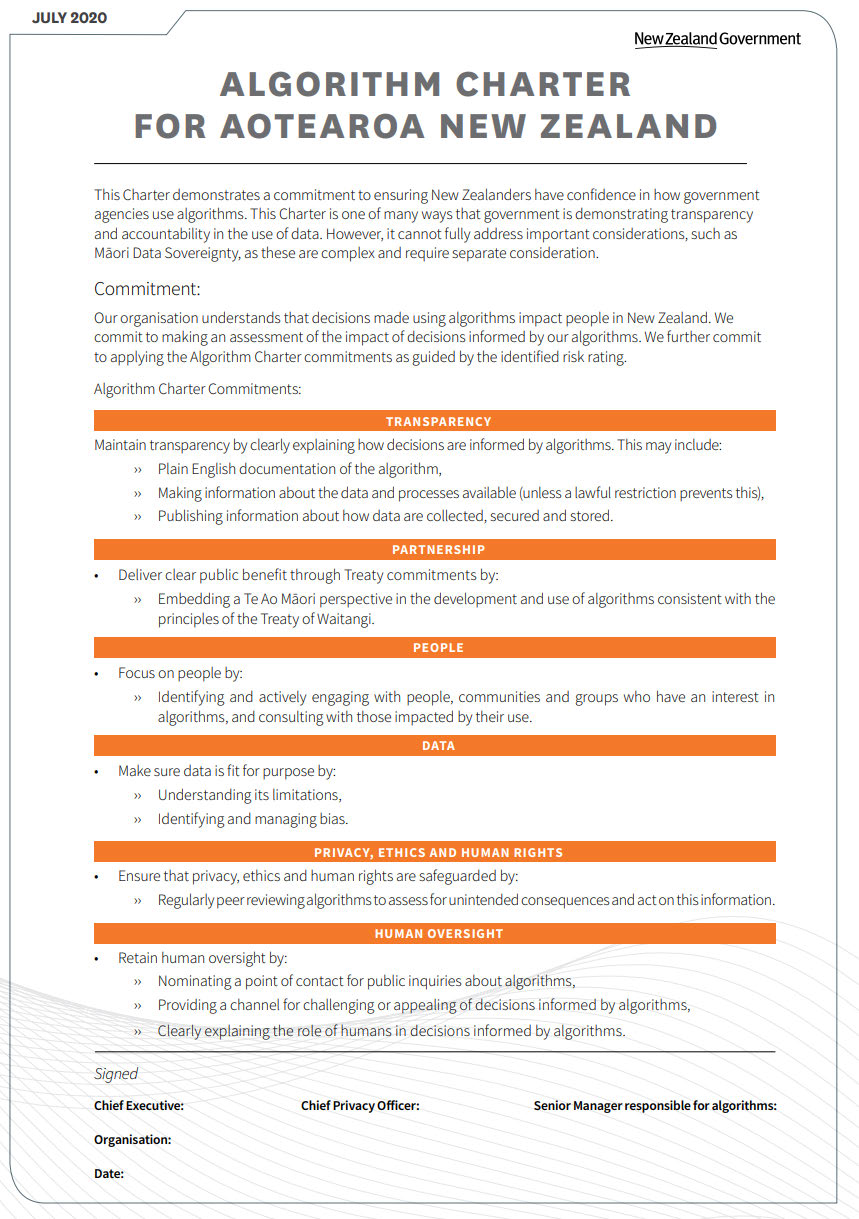
7
Appendix 2: List of al current Algorithm Charter signatories
Current signatories to the Algorithm Charter:
• Te Ara Poutama Aotearoa — The Department of Corrections
• Te Tāhuhu o Te Mātauranga — The Ministry of Education
• Te Manatū Mō Te Taiao — The Ministry for the Environment
• The Ministry of Housing and Urban Development
• Te Tari Taake — Inland Revenue Department
• Te Tāhū o te Ture — The Ministry of Justice
• Toitū Te Whenua — Land Information New Zealand
• Te Puni Kōkiri — The Ministry of Māori Development
• Oranga Tamariki - The Ministry for Children
• The Ministry for Pacific Peoples
• Te Manatū Whakahiato Ora — The Ministry of Social Development
• Te Tatauranga Aotearoa — Statistics New Zealand
• Te Manatū Waka — The Ministry of Transport
• Te Kāhui Whakamana Rua Tekau mā Iwa—Pike River Recovery Agency
• Te Minitatanga mō ngā Wāhine — The Ministry for Women
• Toi Hau Tāngata — Social Wellbeing Agency
• Te Ope Kātua o Aotearoa — New Zealand Defence Force
• Te Kaporeihana Āwhina Hunga Whara — Accident Compensation Corporation
• Te Tari Taiwhenua — Department of Internal Af airs
• Te Arawhiti — The Office for Māori Crown Relations
• Waka Kotahi — The New Zealand Transport Agency
• Te Tari Arotake Matauranga — The Education Review Of ice
• Hīkina Whakatutuki — The Ministry of Business, Innovation, and Employment
• Manatū Aorere — The Ministry of Foreign Af airs and Trade
• Manatū Hauora — The Ministry of Health
• Nga Pirihimana O Aotearoa — New Zealand Police
8

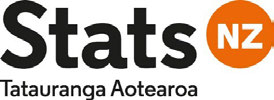 Priority Routine
Joint briefing: Digital
Economy and Communications and Statistics
Priority Routine
Joint briefing: Digital
Economy and Communications and Statistics
Hon Dr David Clark
Minister for the Digital Economy and Communications
Minister of Statistics
Title:
Options for consideration regarding trust and confidence in facial
recognition technology
Date:
11 December 2020
Key issues
You met the Privacy Commissioner, John Edwards, on 7 December 2020 to discuss facial recognition
technology use in New Zealand fol owing the publication of the academic report
Facial Recognition
Technology in New Zealand: Towards a Legal and Ethical Framework (released 4 December 2020)
. This briefing identifies details regarding four options to progress in future. The Government Chief
Privacy Officer and Government Chief Data Steward have identified two further options that you
may also wish to consider.
This briefing is not an exhaustive analysis however it provides advice for your consideration, that
officials would be happy to discuss with you at your convenience.
Action sought
Timeframe
Please
note the contents of this briefing and
consider consultation as an
At your convenience
approach to inform your response to the report.
Please
consider the options presented in this paper and discuss these
options further with officials from the Digital Public Service branch of
Internal Affairs, Stats NZ, and the Ministry of Justice.
Please
distribute this paper to your Ministerial and Cabinet colleagues as
you see fit.
Contact for telephone discussions (if required)
Name
Position
Direct phone After hours
Suggested
line
phone
1st contact
Ann-Marie Cavanagh
Deputy Government Chief
04 494 0620 s9(2)(a)
Digital Officer
Russell Cooke
Government Chief Privacy
s 9(2)(a)
s9(2)(a)
Officer
Dr Craig Jones
Deputy Government
04 931 4907 s9(2)(a)
Statistician, Deputy Chief
Executive, Data System
Leadership, Stats NZ
Return electronic document to: Daniel Anderson, Privacy Consultant,
[email address]
IN-CONFIDENCE
Page 1 of 14
link to page 14
Te Tari Taiwhenua
Department of Internal Affairs
Purpose
1. The purpose of this briefing is to provide you with high-level advice on four options
identified by the Privacy Commissioner to improve trust and confidence in the use of
facial recognition technology (FRT) in the public service and private sector.
2. Officials from the Government Chief Privacy Officer (GCPO) and the Government Chief
Data Steward (GCDS) have identified two further options for consideration.
3. This briefing provides material to support an initial discussion with GCPO, GCDS and
Justice officials, and other interested Ministers, including the Minister of Justice.
4. Discussions you lead can set the direction for where officials should focus work to
understand the risks posed by FRT and the gaps in existing regulation and practice.
Executive summary
5. The academic report titled
Facial Recognition Technology in New Zealand: Towards a
Legal and Ethical Framework1 was released to the public on Friday 4 December 2020.
You and the Privacy Commissioner, John Edwards, spoke to media on the day it was
launched.
6. The report deals with how FRT interacts with several areas of law, including search and
surveillance, law enforcement, evidence, human rights and privacy. This briefing
focuses on privacy and data use.
7. You met the Privacy Commissioner on the afternoon of Monday 7 December 2020 to
discuss options for responding to the recommendations in the report. In this meeting
four options were raised:
7.1
s 9(2)(f)(iv)
7.2
s 9(2)(f)(iv)
7.3
s 9(2)(f)(iv)
7.4
s 9(2)(f)(iv)
8. Officials from the GCPO and GCDS have identified two further options:
8.1
s 9(2)(f)(iv)
8.2
s 9(2)(f)(iv)
9. Further work is needed on the report’s findings and recommendations, including the
risks posed by FRT and where the gaps are in existing regulation and practice. The
briefing makes some initial observations on what may be involved for possible
responses, such as:
1 The lead author of this paper, Associate Professor Dr Nessa Lynch, is a member of the Data Ethics Advisory
Group, convened by the GCDS.
IN-CONFIDENCE
Page 2 of 14
Te Tari Taiwhenua
Department of Internal Affairs
9.1
What each of the options may look like and how to achieve it;
9.2
What needs to be considered;
9.3
Who needs to be consulted; and
9.4
A realistic timeframe for how long each option may take.
10. Some options would involve changes to privacy policy, which fal s within the
responsibilities of the Minister of Justice. Other options focus more on behavioural
change and improving practice within existing policy settings.
11. We recommend that you discuss these options with officials from the GCPO, GCDS and
the Ministry of Justice to inform next steps. We also recommend that you further
discuss this matter with the Privacy Commissioner.
Facial recognition technology
Use and concerns in the public and private sector
12. FRT allows for the rapid identification of an individual. When used appropriately and
responsibly, FRT can deliver significant benefit to New Zealand and New Zealanders,
such as passports and border control.
13. Existing FRT use in the public service is controlled, monitored, and appropriate. We are
not aware of any use of FRT in mass surveillance; expanded usage of the technology
should require discussion with the Privacy Commissioner to ensure its use is
proportionate and appropriate.
14. FRT use in the public service has brought cost savings, improved productivity, reduced
fraud, and improved ease of access to services for citizens compared to previously-
existing manual processes.
15. FRT services are embedded in some products such as using faces to unlock mobile
phones. This use is separate to standalone FRT products and services used by the
public service for a certain use case such as fraud detection, which is the focus of
advice in this paper.
16. However, FRT also carries risk and is highly contentious. For example, there is the risk
of identifying the wrong individual, and the Report highlighted use cases beyond New
Zealand where FRT was used incorrectly and unethically.
17. For these reasons, and because FRT uptake will increase in the future, we must pay
particular attention to the regulatory environment for FRT.
18. FRT use, especially in law enforcement, should be a tool to help a
human make a
decision, and not for FRT to be the ultimate decision-maker.
Work is underway to increase public trust and confidence in the government’s use of
personal data and new technologies
19. Public trust and confidence in government use of data and technology is an ongoing
focus for system leads. The GCPO and GCDS are leading work to support this.
20. In 2018 the government undertook a review of how government agencies use
algorithms to improve the lives of New Zealanders in the
Algorithm Assessment
Report. In response to recommendations from this report the GCDS has developed the
Algorithm Charter, convened an independent Data Ethics Advisory Group, and begun
IN-CONFIDENCE
Page 3 of 14
Te Tari Taiwhenua
Department of Internal Affairs
work to improve training and professional development for data analysts and decision-
makers. Other work to increase integrity of data practices across government, for
example Ngā Tikanga Paihere, contributes to public trust in government use of
personal data.
21. The GCPO sets standards and issues guidance for agencies using personal information,
and actively engages with public service departments and Crown Entities to uplift their
privacy maturity. Good privacy maturity is important to improve public trust and
confidence in the public service and is a foundational aspect of the Strategy for a
Digital Public Service.
22. The private sector in New Zealand is also providing leadership in the responsible use of
Artificial Intelligence (AI); s 9(2)(f)(iv)
Private sector initiatives include the
AI Forum of New Zealand releasing the
Trustworthy AI in Aotearoa, AI Principles in
March 2020
.
23. There is an opportunity for work in this area to be further aligned and coordinated
between agencies, Ministers and public stakeholders.
24. In addition, a new Privacy Act 2020 has just come into force. The Privacy Act applies to
FRT as images of people are personal information. Any use of FRT or disclosure of facial
images must comply with the Information Privacy Principles in the Act. If a public or
private sector agency fails to comply with those principles in a way that harms an
individual, that person can complain to the Privacy Commissioner.
25. The new Act strengthens privacy protections in New Zealand. The Act includes a new
power for the Privacy Commissioner to issue compliance notices, which can require an
agency (public or private) to do something to comply with the Act. Implementation of
the Act has been supported with additional funding for the Office of the Privacy
Commissioner to allow the Privacy Commissioner to take a more proactive approach.
What matters about FRT use in the public service?
26. From the academic report, officials have identified the fol owing key things to consider
in any work on FRT:
27.
Trust and confidence: citizens must have trust and confidence that the public service is
using FRT in a manner consistent with the law and society’s expectations.
Transparency is an important aspect to build trust and confidence.
28.
Assurance: citizens must have appropriate assurance that the public service is using
FRT only for the purposes the agency said it uses it for.
29.
Use and negating scope creep: citizens must understand FRT’s current use and its
potential for the public service and the benefits it can produce. “Scope creep” must be
control ed and prevented.
30.
Māoritanga: Iwi Māori concerns about the use of FRT need to be understood and
appropriate engagement with Māori treaty partners be undertaken. Moving too
quickly with a response and without fully understanding the relevance and
implications of FRT for Māori could create new issues including unintentional y
embedding systemic inequalities.
IN-CONFIDENCE
Page 4 of 14
Te Tari Taiwhenua
Department of Internal Affairs
31.
Direction of the digital economy: FRT use can help facilitate progressing the growth of
the digital economy, but the impact it can have must be better understood.
Next steps for building trust and confidence in FRT use
32. The release of the academic report creates an opportunity to build on existing system
work. There is a clear role for government to be a leader in this space. Whether you
wish to investigate regulatory or non-regulatory approaches further, it wil be
important that officials engage with the public. For example, a discussion document
could be used as a vehicle for wider engagement, and this can include contributions
from agencies that already use FRT.
33. It is important that the Government responds in a balanced and considered way, while
maintaining momentum, as the capabilities of these new technologies wil continue to
advance. The impact of each option will not apply to government agencies equally.
34. The following section explores some options for a more detailed response. Some of
the options respond directly or indirectly to recommendations from the academic
report. Please note that the Minister of Justice is a key stakeholder for al of these
options and we encourage discussion with the Minister and Ministry officials.
s 9(2)(f)(iv)
40. s 9(2)(f)(iv)
IN-CONFIDENCE
Page 5 of 14
Te Tari Taiwhenua
Department of Internal Affairs
41. s 9(2)(f)(iv)
s 9(2)(f)(iv)
42. s 9(2)(f)(iv)
43. s 9(2)(f)(iv)
44. s 9(2)(f)(iv)
s 9(2)(f)(iv)
45. s 9(2)(f)(iv)
46. s 9(2)(f)(iv)
47. s 9(2)(f)(iv)
48. s 9(2)(f)(iv)
s 9(2)(f)(iv)
s 9(2)(f)(iv)
49. s 9(2)(f)(iv)
50. s 9(2)(f)(iv)
51. s 9(2)(f)(iv)
52. s 9(2)(f)(iv)
2
Ministers and Crown Entities, section 3.35, Cabinet Manual 2017
IN-CONFIDENCE
Page 6 of 14
Te Tari Taiwhenua
Department of Internal Affairs
53. s 9(2)(f)(iv)
s 9(2)(f)(iv)
54. s 9(2)(f)(iv)
55. s 9(2)(f)(iv)
56. s 9(2)(f)(iv)
57. s 9(2)(f)(iv)
s 9(2)(f)(iv)
58. s 9(2)(f)(iv)
59. s 9(2)(f)(iv)
60. s 9(2)(f)(iv)
61. s 9(2)(f)(iv)
s 9(2)(f)(iv)
62. s 9(2)(f)(iv)
63. s 9(2)(f)(iv)
IN-CONFIDENCE
Page 7 of 14
Te Tari Taiwhenua
Department of Internal Affairs
s 9(2)(f)(iv)
64. s 9(2)(f)(iv)
65. s 9(2)(f)(iv)
s 9(2)(f)(iv)
66. s 9(2)(f)(iv)
67. s 9(2)(f)(iv)
s 9(2)(f)(iv)
68. s 9(2)(f)(iv)
69. s 9(2)(f)(iv)
70. s 9(2)(f)(iv)
s 9(2)(f)(iv)
71. s 9(2)(f)(iv)
IN-CONFIDENCE
Page 8 of 14
Te Tari Taiwhenua
Department of Internal Affairs
s 9(2)(f)(iv)
72. s 9(2)(f)(iv)
s 9(2)(f)(iv)
73. s 9(2)(f)(iv)
74. s 9(2)(f)(iv)
75. s 9(2)(f)(iv)
76. s 9(2)(f)(iv)
s 9(2)(f)(iv)
77. s 9(2)(f)(iv)
78. s 9(2)(f)(iv)
79. s 9(2)(f)(iv)
80. s 9(2)(f)(iv)
81. s 9(2)(f)(iv)
s 9(2)(f)(iv)
82. s 9(2)(f)(iv)
s 9(2)(f)(iv)
83. s 9(2)(f)(iv)
IN-CONFIDENCE
Page 9 of 14
Te Tari Taiwhenua
Department of Internal Affairs
84. s 9(2)(f)(iv)
s 9(2)(f)(iv)
IN-CONFIDENCE
Page 10 of 14
Te Tari Taiwhenua
Department of Internal Affairs
s 9(2)(f)(iv)
IN-CONFIDENCE
Page 11 of 14
Te Tari Taiwhenua
Department of Internal Affairs
s 9(2)(f)(iv)
106. s 9(2)(f)(iv)
107. s 9(2)(f)(iv)
s 9(2)(f)(iv)
108. s 9(2)(f)(iv)
Next steps
109. Officials from the Digital Public Service branch including the GCPO and from Stats NZ
including the GCDS would like to meet with you to discuss these options further.
110. Officials are able to meet with you at your convenience.
IN-CONFIDENCE
Page 12 of 14

Te Tari Taiwhenua
Department of Internal Affairs
Recommendations
111. We recommend that you:
a)
note the contents of this briefing
Yes/No
b)
consider consultation as an approach to inform your response to
Yes/No
the report
c)
consider the options presented in this paper and discuss these
Yes/No
options further with officials from the Digital Public Service branch
of Internal Affairs, Stats NZ, and the Ministry of Justice
d)
distribute this paper to your Ministerial and Cabinet colleagues as
Yes/No
you see fit
Ann-Marie Cavanagh
Deputy Government Chief Digital Officer, Digital Public Service, Department of Internal
Affairs
Dr Craig Jones
Deputy Government Statistician, Deputy Chief Executive, Data System Leadership, Stats NZ
Hon Dr David Clark
Minister for the Digital Economy and
Communications
Minister of Statistics
/
/
IN-CONFIDENCE
Page 13 of 14
Appendix A: Comparison table of the six identified options
#
s 9(2)(f)(iv)
1
s 9(2)(f)(iv)
2
s 9(2)(f)(iv)
3
s 9(2)(f)(iv)
4
s 9(2)(f)(iv)
5
s 9(2)(f)(iv)
6
s 9(2)(f)(iv)
IN-CONFIDENCE
Page 14 of 14
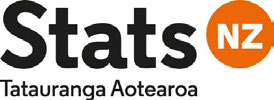 Briefing to the Minister of Statistics: Fostering public trust and
confidence in new and emerging uses of data and digital technology
Date
Briefing to the Minister of Statistics: Fostering public trust and
confidence in new and emerging uses of data and digital technology
Date
5 May 2021
Priority
Medium
Ref number MM2043
Timeline and next steps
Decision or action 14 May 2021
required by:
Wil be discussed Meeting with Stats NZ officials on 4 May 2021
at:
Purpose
This briefing provides an update on the recent review of the Data Ethics
Advisory Group, and proposes a suite of recommendations focussed on:
fostering increased public trust and confidence in the way government
uses data and digital technology;
positively influencing the level of trust in institutions more general y,
including within the private sector; and
championing the value of data and emerging technology
Linkages
Digital Strategy for Aotearoa
Data Ethics
Algorithm Charter
MM1987 Supplementary Briefing to the Incoming Minister of Statistics:
Data System Leadership initiatives
Publicity
If appropriate, this briefing wil be proactively published on Stats NZ’s
website as per standard practice
Recommended action
Stats NZ recommends that you:
1.
Agree in principle to:
a. s 9(2)(f)(iv)
AGREE / DISAGREE
b. s 9(2)(f)(iv)
AGREE / DISAGREE
c. s 9(2)(f)(iv)
AGREE / DISAGREE
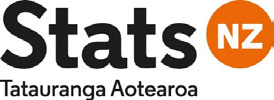

d. s 9(2)(f)(iv)
AGREE / DISAGREE
Dr Craig Jones
Hon Dr David Clark
Deputy Government Statistician &
Minister for the Digital Economy &
Deputy Chief Executive - Data System
Communications, Minister of
Leadership, Stats NZ
Statistics
Date:
link to page 29 link to page 29
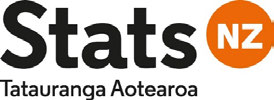 Growing awareness about the critical nature of trust
Growing awareness about the critical nature of trust
2.
Public trust in the way that data and new technology are being used is becoming an
increasingly important consideration for many governments and institutions. A high level
of trust is considered critical to the development and uptake of digital technology, and
the limitations that a lack of trust can place on innovation are widely acknowledged.
3. Awareness about the critical nature of trust is continuing to build. Late last year, the ten
Digital Nation member states (of which New Zealand is one) signed the updated Digital
Nations Charter – committing to a set of principles for the design, development and
deployment of digital technology, particularly in the use of data and artificial intelligence.
The principles include a commitment to ensure:
• that adequate and necessary safeguards are in place to uphold public trust and
protect personal data; and
• that work is guided and underpinned by effective ethical, legal, and human rights
frameworks.
4. Two recent research reports,
‘Facial Recognition Technology in New Zealand: Towards
a Legal and Ethical Framework’1 and
‘Towards Trusted Automated Decision-Making’2
have further highlighted the need to foster trust in the way that we use technology, and to
provide New Zealanders with greater assurances and protections.
5. Since the publication of these reports, there has been coverage within the media of
biometric technology and its uses, including the potential use of emerging technologies
by the New Zealand Police. The wider context involves international media coverage
highlighting the risks of, and potential harms resulting from, cyber security events,
inappropriate surveil ance, misuse of personal data, misinformation, algorithmic bias, and
a lack of transparency.
6. Stats NZ’s recent exploratory work on the lessons learned from COVID-19 has also
identified the need to provide strengthened support for government agencies to navigate
ethical issues when it comes to data sourcing and use.
7. In addition to wider community interests in the safe and ethical use of data, there is
growing awareness among government agencies of the data needs and aspirations of
tangata whenua. Stats NZ and the Data Iwi Leaders Group have initiated a co-design
process to establish a Māori Data Governance model. This will enable iwi and Māori to
have greater decision-making over how their data are collected and used. This will be
underpinned by processes and structures that establish trust between parties.
Your portfolio responsibilities for the ethical use of data
8. The Government Chief Data Steward (GCDS) leads the government data system,
empowering government agencies to use data more effectively while maintaining the trust
and confidence of New Zealanders. The trust element has become a recent focus for the
GCDS as new and emerging uses of data become more commonplace. As per your
appointment letter from the Prime Minister, the GCDS’s functions form part of your
portfolio responsibilities.
1 The Law Foundation New Zealand - November 2020. Nessa Lynch, Liz Campbel , Joe Purshouse, Marcin
Betkier
2 Digital Council for Aotearoa - Report | 2021-04-16 |. Mitchel Pham (Chair), Colin Gavaghan, Kendal Flutey,
Marianne El iott, Nikora Ngaropo, Rachel Kel y and Roger Dennis
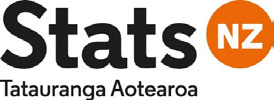
9. Your Statistics portfolio includes responsibility for overseeing the stewardship of data held
on behalf of New Zealanders. This includes championing data as a strategic asset, and
taking a strategic view of how data is collected, used and re-used across New Zealand –
with a focus on trusted use. Trusted use involves providing others, both within and outside
government, with confidence to share and use data in such a way that upholds social
licence.
Review of the Data Ethics Advisory Group
10. The Data Ethics Advisory Group was established in September 2019 by the GCDS to
enable government agencies to test ideas, policy, and proposals related to new and
emerging uses of data.
11. At the time of establishment, it was determined that the operation and membership of the
Group should be reviewed after one year to ensure that the Group was achieving its aims.
12. An external review of the group was completed late last year and concluded that a revised
focus was needed, given the relatively low uptake by agencies to seek or implement the
group’s advice.
13. s 9(2)(f)(iv)
Regulatory landscape for the use of data and emerging technology
14. Cross-agency work has been undertaken to understand the legislative and regulatory
framework that applies to emerging technology and the use of data – both within and
outside of government.
15. The current legislative and regulatory framework is considered sufficient by many in
regard to the protections and redress it provides within the areas of:
• individual privacy and data protection;
• human rights and the conduct of government;
• interpersonal and criminal harms; and
• copyright.
16. s (9)(2)(g)(i)
. Beyond the Data Ethics Advisory Group, there are a series of
frameworks to guide best practice, including the Privacy, Human Rights and Ethics
Framework (developed by the Ministry for Social Development); the Algorithm Charter for
Aotearoa, and Ngā Tikanga Paihere – providing guidance on safe, responsible, and
culturally appropriate use of data (developed by Stats NZ); and the Data Protection and
Use Policy (developed by the Social Wellbeing Agency).
17. Outside of government, there are pockets of good practice, but many large firms that are
considered critical to growth within the digital economy stil have not embedded ethical
principles into their data operations and decision-making. There is also a lack of
acknowledgment that a loss in trust and confidence in one organisation’s data practice
wil limit progress and innovation across the board.
18. There is no suggestion that agencies or businesses routinely use data in unethical ways
but there have been instances where social licence boundaries have been breached. It
wil be important for the regulatory environment to keep pace as data and digital
technologies continue to proliferate.
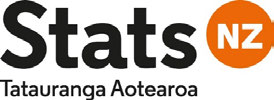 Proposal to establish a new suite of measures to uphold public trust
Proposal to establish a new suite of measures to uphold public trust
Aim
19. The public service is at the centre of concerns about data and technology ethics in two
ways: Government holds a significant amount of data about New Zealanders; it also
regulates the use of data both within, and outside, government.
20. The proposals in this paper are aimed towards:
increasing public trust and confidence in the way government uses data and
emerging technology;
positively influencing the level of trust in institutions more generally, including within
the private sector; and
fostering an environment where the value of data and emerging technology can be
realised.
Proposals
21. A multi-tiered approach is considered the most ef ective way to escalate the importance
of, and embed, ethical practice.
22. s 9(2)(f)(iv)
Links with the Digital Strategy for Aotearoa
23. You may wish to consider whether these proposals could form a key initiative under the
trust theme of the Digital Strategy for Aotearoa, in addition to delivering on the GCDS’s
trust work programme.
24. s 9(2)(f)(iv)
25. To strengthen the suite of initiatives, early discussions are also underway between
relevant agencies to consider:
s(9)(2)(f)(iv)

s(9)(2)(f)(iv)
s(9)(2)(f)(iv)
An overview of the type of ethical issues arising
In scope of proposals – a focus on data
Out of scope of proposals
The ethical use of data
• Algorithmic bias in decision making and
Smart technology
the potential for discrimination
• Autonomous vehicles
• Lack of explainability about how data is
used to inform decisions
Harmful digital content
• Governance of the data col ected and
how it’s used
• The dissemination of fake news
• Māori data governance and genuine
• Social media regulation
alignment with Te Tiriti principles
• The sharing of deep fakes
• Consent and mass collection of data
• Data driven tools to target social media
• Problematic AI and data use
content, news, and marketing.
• Technology that presents concerns
around accuracy, bias, data retention
and sharing (i.e. FRT uses algorithms to
Inclusivity
assess similarities between faces)
• Software development and design for
• Hyper-personalised risk assessments
inclusion
using predictive modelling
• New forms of nudging
26. s 9(2)(f)(iv)
s 9(2)(f)(iv)
27. s 9(2)(f)(iv)
s 9(2)(f)(iv)
28. s 9(2)(f)(iv)
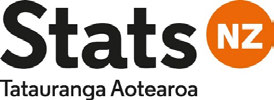
s 9(2)(f)(iv)
s 9(2)(f)(iv)
29. s 9(2)(f)(iv)
30. s 9(2)(f)(iv)
31. s 9(2)(f)(iv)
32. s 9(2)(f)(iv)
s 9(2)(f)(iv)
33. s 9(2)(f)(iv)
34. s 9(2)(f)(iv)
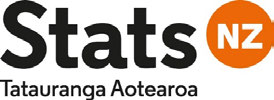
s 9(2)(f)(iv)
s 9(2)(f)(iv)
35. s 9(2)(f)(iv)
36. s 9(2)(f)(iv)
s 9(2)(f)(iv)
37. s 9(2)(f)(iv)
s 9(2)(f)(iv)
38. s 9(2)(f)(iv)
s 9(2)(f)(iv)
39. s 9(2)(f)(iv)
s 9(2)(f)(iv)
40. s 9(2)(f)(iv)
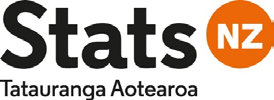 Operationalising the Algorithm Charter
Operationalising the Algorithm Charter
41. Twenty-six public sector agencies are signatories to the Algorithm Charter and we are
aware of some significant shifts in practice since the Charter was introduced. However,
we are also aware that some agencies have struggled to work through what practical
changes need to be made to give effect to the Charter’s purpose. We wil be formally
reviewing Charter implementation in July 2021 and it is likely that some practical
guidelines for implementing the Algorithm Charter wil be required to further embed
practice.
42. A practice manual could be developed which provides practical tools, articulates best
practice from around the globe, provides a framework for operationalisation, cites case
studies, and sets indicators for success. There may be other shifts required and these wil
be investigated as part of the review of the Charter.
43. This work wil be undertaken within Stats NZ’s baseline.
s 9(2)(f)(iv)
s 9(2)(f)(iv)
s 9(2)(f)(iv)
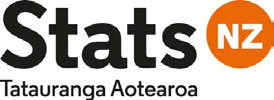 Consultation
Consultation
48. Consultation on this paper has been carried out with members of the cross-government
Tier 2 Analytics Group, the cross-agency Information Group, the Of ice of the Government
Chief Digital Of icer, the Government Chief Privacy Officer, and the inter-agency group
working on the Digital Strategy for Aotearoa.
49. After discussion with you, consultation is planned with the Prime Minister’s Chief Science
Advisor and a wider set of government agencies.
Next steps
50. Stats NZ officials are available to discuss these proposals further with you at the Of icials
meeting of 11 May.
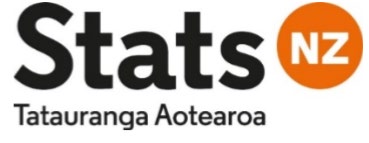 Report to the Minister of Statistics
Long-term Insights Briefing: The exponential growth of data and
data-driven technologies
Date
Report to the Minister of Statistics
Long-term Insights Briefing: The exponential growth of data and
data-driven technologies
Date
25 August 2021
Priority
Medium
Ref number MM2087
Timeline and next steps
Decision or action No decision required
required by:
Purpose
This briefing:
•
provides an overview of the legislative requirements for public service
departments to publish a Long-term Insights Briefing (the Briefing);
•
outlines the purpose of, and features required from, the Briefing;
•
provides a high-level overview of Stats NZ’s chosen Briefing topic;
and
•
sets out the process Stats NZ wil follow to deliver its first Briefing
next year.
Publicity
This briefing wil be proactively released on the Stats NZ website
Recommended action
It is recommended that you:
1.
Note that Stats NZ intends to publish a Long-term Insights Briefing on the exponential growth
of data and data-driven technologies, fulfilling the department’s obligations under Schedule 6 of
the Public Service Act 2020.
NOTED
2.
Note that Stats NZ intends to publicly consult on the topic and scope of the briefing during
September, subject to advice on undertaking consultation during Level 4 lockdown.
NOTED
3.
Note that a completed briefing wil be provided to you in June 2022 ahead of select committee
consideration, however updates on progress can be provided across different stages of
development if you wish.
NOTED
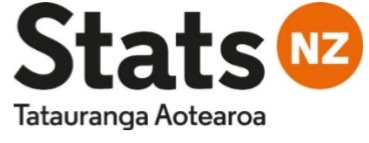

4.
Forward this briefing to the Associate Minister of Statistics, Hon Meka Whaitiri
YES / NO
Dr Craig Jones
Deputy Government Statistician &
Deputy Chief Executive - Data System
Leadership, Stats NZ
Hon Dr David Clark
Hon Meka Whaitiri
Minister of Statistics
Associate Minister of Statistics
Date:
Date:
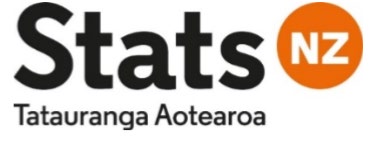 Legislative requirements to publish a Long-term Insights Briefing
Legislative requirements to publish a Long-term Insights Briefing
1. Long-term Insights Briefings are a new requirement for departments under the Public
Service Act 2020, and are part of the public sector’s duty of stewardship to look at future
challenges and opportunities for New Zealand.
Briefing purpose
2. The purpose of the Briefings is to make available in the public domain:
• information about medium and long-term trends, risks and opportunities that affect or
may affect New Zealand and New Zealand society; and
• information and impartial analysis, including policy options for responding to these
matters.
3. The Briefing provides a platform for identifying and exploring the issues that matter for the
future wellbeing of the people of New Zealand. DPMC describes the Briefings as an
opportunity to enhance public debate on long-term issues and usefully contribute to future
decision making – not only by government but also by Māori, business, academia, not-
for-profit organisations, and the wider public.
4. The Act requires departments to publish a Briefing once every three years, with the first
suite of Briefings due next year.
Briefing development is independent of Ministers
5. The requirement to publish a Briefing is a statutory duty placed on departmental chief
executives, and is independent of Ministers. The Briefings are think-pieces on the future,
not government policy, and therefore differ from the advice that the public service provides
Ministers, or the accountability and planning documents prepared for Parliament. The
Briefing will not indicate a preference for a particular policy option.
Overview of Briefing topic: Growth in data and data-driven technologies
Growth in data is considered a strong candidate for exploration as a long-term trend
6. Data and data-driven technology is increasingly being used in new and emerging ways –
often attributable to the decline in the cost of data collection, storage and processing,
leading to the generation and use of huge volumes of data (commonly referred to as “big
data”).
7. While this technology has the potential to drive social and economic value, there is also
the potential for misuse. As you are already aware, an essential consideration for
governments, businesses and civil society is how these technologies are harnessed and
regulated to accelerate growth, encourage innovation and build resilience.
8. These Briefings provide a good platform for complex issues with high levels of ambiguity
and change, and where there are active champions wil ing to challenge assumptions and
influence the policy area. This describes the data system - where technology development
is fast-paced, innovative and in some cases revolutionary, and where some aspects -
such as artificial intelligence, do not easily fit into existing regulatory frameworks.
The focus for the briefing is on horizon scanning with a view to long-term benefits for society
9. There is a connection between this Briefing topic and the work commissioned on advisory
and redress options for data ethics. It is important to note that this Briefing covers a
broader subject area and is focussed on the drivers of change over the next ten years,
including exploring the implications of future change for decision-making today. The
objective is to help inform strategic priorities for future policy agendas. However, any
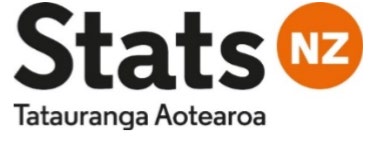
relevant and topical insights generated through consultation on the Briefing, can be fed
through and inform policy work on data ethics if desired.
Proposed subject areas
10. The intended scope for the Briefing includes:
• the expected changes in society and the economy of an increasingly sophisticated
data landscape (potentially using the pandemic as an example of acceleration in this
space) and considering aspects such as:
o the growing pervasiveness of modern technology – and what this means for
society; and
o the interconnectedness and dynamic nature of data – and what this means for
our knowledge economy i.e., science and innovation;
• how New Zealand can best maintain and leverage the benefits of data – focusing on
the role of data in:
o innovation and growth, and the role of large datasets as economic assets
which foster new industries, processes and products – creating significant
competitive advantages;
o well-being and social connectivity;
o democratic activity and government policymaking; and
o employment and delivering greater value via the use of data to automate and
optimise processes, and to deliver innovative solutions;
• the risks of data and data-driven technologies gaining prominence within society,
including:
o the risk of exceptional intrusiveness (with personal data held on multiple
databases);
o potential harms associated with automated decisions– including
discrimination and bias, disempowering individuals or particular groups, and
harms to dignity and autonomy and the associated social effects;
o the role of trusted data sources at a time where dis/mis-information is
increasingly undermining trust and democracy;
• a focus on issues important to Māori and other population groups (e.g., potentially
including how ownership and responsibilities are defined, new digital divides, and
inclusivity in data).
Process
11. While Briefings are to be developed independently to Ministers, departments are required
to keep Ministers informed and work to the ‘no surprises’ convention.
12. As Minister of Statistics, you are required to present the Briefing in the House as soon as
reasonably practicable after receiving it from Stats NZ. The following summary outlines
the proposed timeframes for the Briefing:
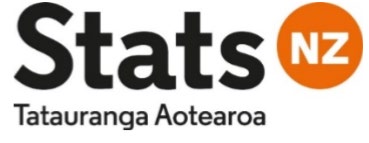 Action
Timing
Action
Timing
Public consultation on topic and proposed scope
September 2021
Publication of consultation summary and response (on topic/scope) October 2021
Draft briefing to be provided to your Offices
March 2022
Public consultation on Briefing
April – May 2022
Publication of consultation summary and response (on Briefing)
June / July 2022
Present Briefing to the Minister of Statistics
June 2022
13. Advice is currently being sought to determine any requirements for consultation
undertaken during Level 4 lockdown. This may impact timeframes.
14. Consultation on the content of the Briefing wil be undertaken extensively with Māori and
with the Data Iwi Leaders Group during the public consultation planned for April and May
2022. The views of the Data Iwi Leaders Group on the topic and scope wil be sought next
month.
15. Once consultation on the topic and scope is complete. Stats NZ wil report to a dedicated
public sector leadership group with any changes.
Next steps
16. Of icials are developing the scoping document to publicly consult on. A copy wil be
provided to your Of ices ahead of consultation.
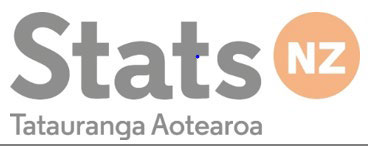
 Briefing to the Minister of Statistics:
Briefing to the Minister of Statistics:
Strengthening public confidence in the ethical use of data
Date
16 September 2021
Priority
Medium
Ref number MM2096
Timeline and next steps
Wil be discussed DEC Officials meeting of 20 September 2021 (closed item).
at:
Purpose
This briefing provides advice about strengthening data ethics and innovation
capability in New Zealand, with a focus on strategic policy, assurance, and
advice.
This paper follows the previous briefing:
Establishing a Data Ethics
Commissioner Function (Ref 2073), dated 4 August, and responds to your
request for advice about progressing a model similar to the Centre for Data
Ethics and Innovation in the United Kingdom.
Recommended action
Stats NZ recommends that you:
1.
Note that issues in relation to data use and data-driven technology are novel, complex,
fast moving and far reaching, and there is a need to strengthen strategic policy, assurance
and advisory functions to keep pace with rapidly developing technologies.
NOTED
2.
Note this briefing provides options for your consideration which build on previous
discussions and aim to instil public confidence in the use of data.
NOTED
3.
Agree to a set of options focused on strengthening data ethics and innovation capability
in New Zealand, including:
• s 9(2)(f)(iv)
AND/OR
AGREE/DISAGREE
• working to improve public sector capability by strengthening the mandate of the
Government Chief Data Steward; AND/OR
AGREE/DISAGREE
• reviewing current institutional arrangements to consider whether there is benefit in
coordinating dif erent levers and programmes from across government.
AGREE/DISAGREE
PP
Dr Craig Jones
Hon Dr David Clark
Deputy Chief Executive Data System
Minister of Statistics
Leadership
Date:
Stats NZ
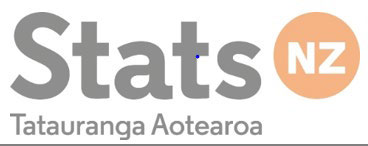 Background
Background
1. Over the last six months, we have undertaken work to explore different options for
establishing new settings and capability mechanisms for the ethical use of data.
2. This paper follows previous briefings that have covered:
• s(9)(2)(f)(iv)
• s(9)(2)(f)(iv)
• s(9)(2)(f)(iv)
• s(9)(2)(f)(iv)
• s(9)(2)(f)(iv)
3. The last of these papers was discussed at the Officials meeting of 9 August. s 9(2)(f)(iv)
At this meeting you sought
further information and advice about a model akin to the Centre for Data Ethics and
Innovation (CDEI) in the United Kingdom.
The Centre for Data Ethics and Innovation in the United Kingdom
4. In response to the shift towards an increasingly data driven economy, the Centre for Data
Ethics and Innovation (CDEI) was established in the UK in 2018. The need to build trust
arose through the rapidly evolving and unfamiliar ethical issues that came with new data
uses, which were posing a risk to public and business confidence in innovation.
5. The CDEI is tasked with:
• providing advice on the ethical and innovative deployment of data and AI;
• identifying measures needed to strengthen and improve the way data and AI are used
and regulated (including articulating best practice and advising on how to address
potential gaps in regulation); and
• convening communities and expertise to provide an overview of, and insight about,
opportunities and risks.
6. A key characteristic of the CDEI is the expectation that it appropriately balances objectives
for both ethical and innovative uses of data to ensure they deliver the greatest benefit for
society and the economy.
7. While not established by statute, the UK Government has commit ed to putting the CDEI
on an “independent statutory footing” as it demonstrates its value over the years, and as
the opportunities and ethical challenges posed by digital technologies emerge further.
The CDEI does not have a role in regulating the use of data and AI - its role is to help
ensure that those who govern and regulate the use of data across sectors do so
effectively.
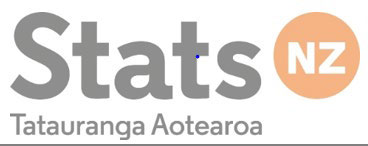
8. The CDEI model operates as its own office with approximately 50 staff and is government
funded.
What functions are needed in New Zealand?
Current context – roles and responsibilities
9. Responsibilities for fostering the ethical and innovative use of data are spread across
several roles including:
• the Government Chief Data Steward (Stats NZ), who is responsible for empowering
government agencies to use data more effectively while maintaining the trust and
confidence of New Zealanders;
• the Government Chief Privacy Officer (DIA), who is responsible for improving privacy
maturity and capability across the public sector;
• the Privacy Commissioner (Independent Crown Entity, administered by the Ministry of
Justice) who is responsible for a wide range of functions specified in the Privacy Act
2020, which include public statements on mat ers affecting privacy; investigating
complaints about privacy breaches; and promoting an understanding of the privacy
principles; and
• MBIE’s role in, and work programme focused on, supporting the uptake and smart
use of ICT across the economy through trust-focused policy initiatives, such as
s 9(2)(f)(iv)
and work to establish a Consumer Data Right.
10. Each of these agencies have significant work programmes in place which aim to deliver
improved ethical use of data. A description of these initiatives is included in Appendix
One, but notable programmes include: the Algorithm Charter for Aotearoa New Zealand;
the Cross-government Biometrics Group; the Consumer Data Right legislative framework,
s 9(2)(f)(iv)
.
There is a need to strengthen functions to keep pace with rapidly developing technologies
11. While we have the benefit of well-established protections for the privacy of personal data,
there is stil inconsistency in data ethics practice across the public and private sectors,
and there is no one home that is responsible for balancing ethics and innovation goals.
Objectives
12. Issues in relation to data use and data-driven technology are novel, complex, fast moving
and far reaching. This advice is formed around the objectives and functionality you
described at the Officials meeting of 9 August. The overriding objective you provided is to
set a regime which instils public confidence. To do this, it is important that any work in this
area:
• has public visibility through a strong identity – with well-known and accepted ethics
and innovation goals and expertise;
• provides assurance and protections against unethical use;
• champions mutually reinforcing ethical and innovative goals for data use; and
• can be scaled towards regulatory functions over time.
Functions
13. The functions needed to deliver on these goals are outlined in the table over the page.
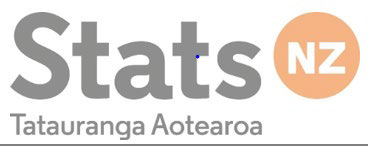 Function
Description
Function
Description
Articulating
Support to maximise the benefits of data in an ethical way
best practice
Advice on best practice including issuing ethical principles, codes of
conduct, and ethics frameworks.
Building capability through communities of practice, training, and issuing
tools for improving skil s and awareness.
Expert advice on request.
Advising on
Providing the public with a high degree of assurance that issues are being
areas where
appropriately canvassed
action is
needed
Advice to Ministers and regulators on the implications of data uses and
areas of potential harm as they are emerging.
Identifying guidance and regulation gaps to ensure practice keeps pace with
developments in data-driven technologies.
Embedding te
Strengthening the way te ao Māori needs and interests are reflected in data
ao Māori
and data-driven technology
perspectives
into the way
Embedding te Tiriti and te ao Māori principles in approaches to data ethics
data is
issues.
managed
Acting as a champion for the consideration of Māori perspectives and
ensuring that conversations about data ethics are accessible from a te ao
Māori lens.
Advice on how to develop systems in a way that incorporates te ao Māori,
respects Māori data sovereignty and empowers Māori as kaitiaki of their
own data.
Engagement
Creating an environment for ethical innovation to grow
to build the
profile of
Championing the value of data and data-driven technology, increasing
ethical
awareness and promoting an understanding of the potential impacts and
innovation
benefits.
Facilitating discussion with industry and civil society about data ethics as an
enabler of positive innovation.
Assurance
Highlighting public expectations to industry and engaging with the public
about the trustworthiness of data and data-driven systems
Engaging closely with the public to understand the broader societal
attitudes towards data and AI use and the public values that our
governance measures should promote and protect.
Providing comment on how safe and ethical data use can be facilitated
further.
Options for delivering functions that support ethics and innovation
14. In addition to s 9(2)(f)(iv)
, other measures are outlined below
which, when combined, would provide for a concentrated and significant effort across both
the public and private sector, and deliver to the goals set out above. This set of options
includes:
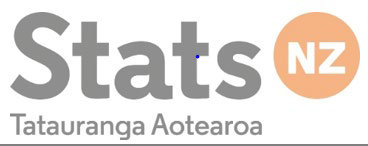
s 9(2)(f)(iv)
Option two:
Strengthening the mandate of the Government Chief Data Steward to
improve public sector capability in data ethics and innovation.
s 9(2)(f)(iv)
15. Together these options wil signal the government’s commitment as a leader in creating
an environment for ethical innovation to thrive.
s 9(2)(f)(iv)
s 9(2)(f)(iv)
18. s 9(2)(f)(iv)
19. s 9(2)(f)(iv)
20. s 9(2)(f)(iv)
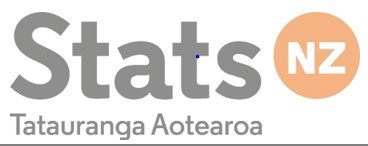
s 9(2)(f)(iv)
s 9(2)(f)(iv)
Option two - Strengthening the mandate of the Government Chief Data Steward
21. An upcoming report-back to Cabinet is scheduled on the role of the Government Chief
Data Steward. You may wish to use this opportunity to seek Cabinet’s agreement to a
stronger mandate to improve ethical practice and establish a monitoring and reporting
regime – providing a strong signal and directive to government agencies about
expectations for ethical data use.
22. Strengthening the mandate for the Government Chief Data Steward aligns with recent
moves, as part of the reformed Public Service Act 2020, to strengthen system leadership
by providing for system leaders to create mandatory requirements of government
agencies. There is also alignment with the draft Cabinet paper:
Data Investment Plan:
Setting priorities for government data over a ten-year horizon (currently out for
departmental consultation), which proposes an annual report to Cabinet on the health of
the data system. This could also be used to comment on, and provide assurance about,
government’s ethical use of data.
s 9(2)(f)(iv)
Improving practice across government via the Government Chief Data Steward
mandate
Timeframes: Cabinet agreement could possibly be sought this year – depending on current
scheduling and wait times (potentially using a single Cabinet paper to seek
agreement to both options one and two).
Some functionality could be delivered immediately after Cabinet agreement.
s 9(2)(f)(iv)
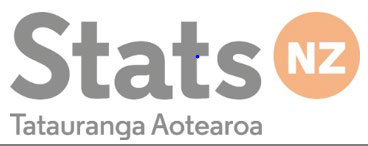
Delivers to goals:
Fosters trust through improved public visibility:
Provides assurance and protections against unethical use:
Champions mutual y reinforcing ethical and innovative data use:
Can be scaled towards a regulatory role in time:
Comment:
Given the inward-facing nature of the role, this option doesn’t provide significant public
visibility. However, strengthening the mandate wil provide for stronger assurance across the
public service.
s 9(2)(f)(iv)
23. s 9(2)(f)(iv)
24. s 9(2)(f)(iv)
s 9(2)(f)(iv)
s 9(2)(f)(iv)
s 9(2)(f)(iv)
Consultation
25. This briefing has been prepared by Stats NZ in early consultation with the Public Service
Commission, DIA and MBIE.
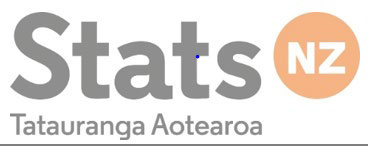 Next steps
Next steps
26. We wil commence work on your preferred option, including undertaking detailed costing
work, developing a business case for investment and working through how the preferred
option connects with existing roles.
27. s(9)(2)(f)(iv)
28. s(9)(2)(f)(iv)
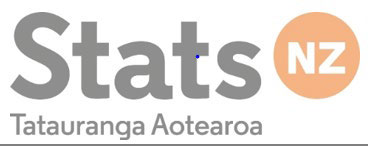 Appendix One – Work underway
Appendix One – Work underway
Item
Description
Lead
Algorithm
The Algorithm Charter aims to increase transparency and Stats NZ
Charter for
accountability of government agencies when using algorithms.
Aotearoa
Twenty-six public sector agencies are signatories to the Charter and
New Zealand significant shifts in practice have occurred since the Charter was
introduced in 2020.
s 9(2)(f)(iv)
s 9(2)(f)(iv)
Ngā Tikanga
These guidelines draw on te ao Māori concepts to guide and inform Stats NZ
Paihere
the way goals, boundaries, and principles are set when it comes to
Guidelines
data practice.
Māori Data
Work is underway to co-design a model for data governance which Stats NZ
Governance
embeds te ao Māori needs and interests in data.
Consumer
Introduction of a Consumer Data Right wil give individuals and MBIE
Data Right
businesses greater choice and control over their data, by
implementing a new legislative framework that al ows consumers to
securely share their data.
s 9(2)(f)(iv)
Digital
This framework wil
provide for the development of secure, trusted, DIA
Identify Trust and people-centred digital identity services.
Framework
s 9(2)(f)(iv)
World
This playbook provides a framework and guidance on how to run a MBIE
Economic
national, widespread conversation with al stakeholders, seeking
Forum
social licence and building trust in the process.
Playbook for
large scale
engagement
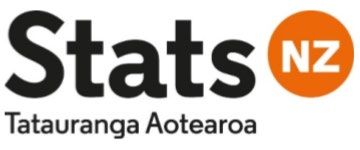 Memorandum to the Minister of Statistics:
Update on the Royal Commission of Inquiry into the Terrorist Attack on
Christchurch Masjidain Recommendation 32
Date
Memorandum to the Minister of Statistics:
Update on the Royal Commission of Inquiry into the Terrorist Attack on
Christchurch Masjidain Recommendation 32
Date
17/11/2021
Priority
L
Reference 2144
Purpose
To update you on Stats NZ’s progress and next steps on responding to Recommendation 32 of the
Royal Commission of Inquiry into the Terrorist At ack on Christchurch Masjidain (Royal
Commission).
Background
1. On 24 November, Hon Andrew Little, the Lead Coordination Minister for the Government’s
Response to the Royal Commission of Inquiry into the Terrorist At ack on Christchurch
Masjidain, wil update the Cabinet Social Wellbeing Commit ee (SWC) on the progress the
Government has made in response to the Royal Commission recommendations.
2. Since the last report back to Cabinet in March 2021, considerable cross-government progress
has been made towards short term priorities. This report back focuses on medium- to long- term
programmes of work. It is seeking Cabinet’s agreement that the 44 recommendations of the
Report be either implemented or part of an agencies’ ongoing activities by 2023.
3. Stats NZ is the lead agency responding to Recommendation 32 of the Royal Commission, in
partnership with the Ministry for Ethnic Communities. Recommendation 32 states:
“Require Public sector agencies to prioritise the col ection of data on ethnic and religious
demographics to support analysis and advice on the implications of New Zealand’s
rapidly changing society, inform better policy making and enhance policy evaluation”.
4. This recommendation is only briefly mentioned in an attachment to the Cabinet paper, so is
unlikely to be the focus of Cabinet discussion. Notwithstanding, it is timely to provide you with
an update on Stats NZ’s progress towards implementing the Recommendation.
Progress on Recommendation 32
5. As set out below, Stats NZ is taking a separate approach to the ethnic demographic data and
religious demographic data elements of the Recommendation.
Work underway to prioritise the collection of ethnic demographic data
6. Information on ethnicity is already collected widely across the public sector. However, it is not
collected, managed, or used across government in a consistent manner. This inconsistency
limits the quality of the data, constraining the data’s value and impacting policy analysis. To
address this, Stats NZ is in the process of developing a new mandated ethnicity standard which
will require agencies to collect data in a consistent way, making the data more useful.
7. Work is underway to scope a review of the existing Stats NZ ethnicity standard. The scoping of
the review wil be completed next month and the review itself will begin in early-2022 and is
expected to take a year to complete. By the end of the year, Stats NZ will have worked with
other agencies to determine whether an updated version of this standard wil become the
mandated standard, or whether an entirely different standard is needed. The updated standard
is intended to provide better guidance to the data system and more accurately reflect the diverse
ethnicities in New Zealand.
In confidence
Work underway to prioritise the collection of religious demographic data
8. There are two parts to responding to the religious demographic data component of the
recommendation. Firstly, Stats NZ has work underway to determine what specific religious
affiliation data would be helpful to inform evidence-based policy analysis and decision making.
Secondly, Stats NZ must carefully manage the sensitivities associated with any new collection,
use and storage of religious data.
Establishing the government need
9. Information on religion is not widely collected across government. Religious affiliation data is
collected in the five-yearly Census of Population and Dwellings (on an opt-in basis). Religious
information does not appear elsewhere in the Integrated Data Infrastructure or in any other major
datasets held by other agencies.
10. Initial discussions across the government data system did not fully establish where government
agencies would use more religious data to inform policy making, or the regularity of data
collection that they would require. Therefore, before proceeding to public consultation, Stats NZ
is undertaking further consultation with the policy
functions in over 50 government agencies to
seek these answers. This will provide a clear picture of why government would collect religious
demographic data, what type of data government agencies would find useful, and how this data
would be used to inform better policy making. This consultation wil be completed by the end of
November.
Community consultation and managing the sensitive nature of this data
11. In December, Stats NZ, with guidance from the Ministry for Ethnic Communities, will consider
the most appropriate mechanism to engage with individuals and communities on this issue, in
line with the results of the agency consultation. Given the sensitivities involved in collecting,
storing, and using religious data, any public consultation would test whether communities feel
comfortable about the government collecting more religious demographic data; the type of
information that they would be comfortable providing, and the circumstances; and how they think
the government could use religious data to inform better policy making.
12. Given the sensitive nature of this work, Stats NZ may engage with academics or a consultant to
design an appropriate consultation mechanism in early-2022.
Next steps
13. Following November’s Cabinet SWC meeting, Minister Little plans to report back to Cabinet
again in the first half of 2022 with proposals for a monitoring and evaluation framework to track
the Government’s response progress, and again by the end of 2022 with an update on the
implementation of the response. We will keep you informed on our progress towards responding
to Recommendation 32 alongside these Cabinet updates.
2

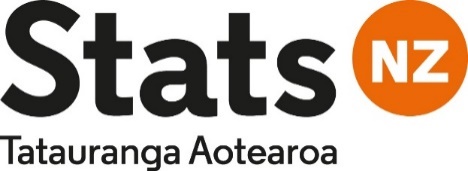
Stats NZ’s Long-term Insights Briefing:
Data as a driver of national
competitive advantage – fostering
improved wellbeing and economic
growth
Consultation document
November 2021
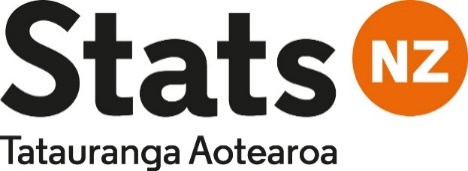
Proposed topic and purpose
This consultation document outlines the proposed topic for our long-term insights briefing,
selected by Stats NZ Tatauranga Aotearoa in its capacity as the Government Chief Data
Steward and as New Zealand’s national statistics office. Our proposed topic is:
Data as a
driver of national competitive advantage – fostering improved wel being and economic
growth.
In this paper we:
• provide an overview of the purpose of, and process for, developing a long-term
insights briefing
• outline our proposed topic, focus areas, and scope.
We welcome your views on the topic, including whether this is a topic of interest and
importance to you, and any feedback about particular areas of focus for our long-term
insights briefing. Consultation closes 19 December 2021.
link to page 56 link to page 56 link to page 57 link to page 57 link to page 58 link to page 59 link to page 60 link to page 60 link to page 61
Contents
Purpose of Long-term Insights Briefings ............................................................................................. 4
Our role ............................................................................................................................................... 4
Areas of focus...................................................................................................................................... 5
The future of data ........................................................................................................................... 5
Combining data to create value ...................................................................................................... 6
Importance of trust and transparency ............................................................................................ 7
Potential role of government to support the use of data to drive social and economic wellbeing
........................................................................................................................................................ 8
Seeking your input .............................................................................................................................. 9
Purpose of Long-term Insights Briefings
The Public Service Act 2020 requires agencies to develop a Long-term Insights Briefing (LTIB) at least
once every three years. The requirement to publish a briefing is a statutory duty on departmental
chief executives, independent of ministers. LTIBs differ from the advice that the public service
provides ministers, or the accountability and planning documents prepared for Parliament.
The purpose of the LTIB is to make available into the public domain:
• information about medium and long-term trends, risks and opportunities that affect or may
affect New Zealand and New Zealand society
• information and impartial analysis, including policy options, for responding to these matters.
These briefings form part of the stewardship role of public service agencies and provide a platform
for identifying and exploring the issues that matter for the future wel being of the people of New
Zealand.
Our role
Stats NZ Tatauranga Aotearoa is dedicated to improving the lives of New Zealanders today and for
generations to come. We are New Zealand’s leaders in data and statistical analysis. We support and
facilitate the release of social, economic, and environmental data for Aotearoa. We deliver statistics,
data, advice, insights, and expertise to our customers, decision-makers, and the general public.
Stats NZ is also the home of the Government Chief Data Steward ‒ the system leader for data across
government. The Government Chief Data Steward is responsible for:
• empowering agencies to use data more effectively while maintaining the trust and
confidence of New Zealanders
• supporting the use of data as a resource across government to help deliver better services to
New Zealanders.
In September of this year, the Government Chief Data Steward released a refreshed
Data Strategy
and Roadmap – providing a shared direction and plan for government agencies to realise the value
of data. We also partnered with other agencies with a policy interest in the digital economy (the
Ministry of Business, Innovation and Employment, Department of Internal Affairs, and Department
of the Prime Minister and Cabinet) on a public discussion document to inform the development of a
digital strategy for Aotearoa.
It is our role to build on this work further by understanding the drivers of change that wil shape the
future data system. Through our long-term insights briefing we hope to identify the future
opportunities of data for wel being and economic growth, and generate new insights to help plan for
our data-driven future.
link to page 57 link to page 57 link to page 57 link to page 57
Areas of focus
Our proposed topic is:
Data as a driver of national competitive advantage – fostering improved
wel being and economic growth. The future of data
Data is growing exponentially
The world’s capacity to generate and store data is growing at a rate faster than ever before. At the
same time, our ability to analyse data to inform decision-making and create products and services
has never been so sophisticated. The potential is limitless, and data is increasingly being viewed as a
means of providing extraordinary public benefit, as an economic asset, and as a driver for greater
productivity and innovation across all sectors of the economy.
The acceleration in data growth has enabled the
Every two years, we create more
development of new technologies, including robotics, the
data than was previously created
internet of things, and artificial intelligence. These
through all of history.
technologies have the ability to change lives. The global
market for these technologies alone already represents
Our hyper-connected world fuels
$US350 billion and has the potential to grow to $US3.2
this exponential increase in data ‒
trillion in just a few short years
1. And this figure doesn’t
from wearable devices and smart
capture the value generated within industries that deploy
appliances to electronic health
these technologies.
records and autonomous vehicles.
Last year, Statistics Canada estimated the value of the
- The Davos Agenda 2021
country’s data at between $157 billion (Canadian) and $218
(World Economic Forum)
billion
2, and the New Zealand Census alone generates $NZ4
for every $NZ1 spent – equating to $NZ2.80 billion dollars
3.
The ubiquitous nature of data has already led to some profound shifts ‒ we can optimise processes
and drive efficiencies across every single industry; people can receive highly customised and tailored
service offerings; and we can innovate faster. These technologies are often referred to as ‘disruptive
innovation’ – that is they have the power to disrupt our systems (our way of doing things) within
government, the economy, and society.
“If there is one thing more important than vaccines in this pandemic, it’s data: data about
transmission dynamics of the novel coronavirus, about symptoms, testing results and hospital
admissions.” Dr Ali Okhowat, Chief Executive Officer, mHealth Global, Canada |
Co-Lead of the
World Health Organization Innovation Hub in Geneva4
As a nation, the extent to which data can fuel a national competitive advantage depends on our
ability to create trustworthy flows of data.
1 United Nations Conference on Trade and Development (2021
). Technology and Innovation Report 2021
(unctad.org)
2 The Economist – Special Report (20, February 2020).
A deluge of data is giving rise to a new economy.
3 Acuo (2021). Value of New Zealand Census.
Value of the New Zealand census: August 2021 | Stats NZ
4 World Economic Forum (2021). Data-driven Economies: Foundations for Our Common Future.
WEF_WP_DCPI_2021.pdf (weforum.org)
link to page 58 link to page 58 link to page 58 link to page 58
Combining data to create value
Data, as pieces of information, are often not valuable in themselves – rather, the value lies in the
ability to combine and integrate data.
However, despite pockets of good practice where data are shared responsibly to generate benefits,
we still have a culture in New Zealand of locking data into silos. As a result, we have data that is
inaccessible to value-add activities such as integration – limiting potential to create new products or
insights.
The power of data sharing is set to build in momentum. Data sharing is often heralded as the path
forward in delivering on the UN’s sustainable development goals
5 and is considered by the Global
Partnership on Artificial Intelligence (GPAI) as a key goal of future data stewardship.
“Being non-rivalrous and a non-exhaustible asset, access to data and the ability to use, re-
use and share it in a rights-respecting environment has the potential to solve many social,
economic and environmental problems, and create opportunities for innovation, whether
in existing sectors or by creating new sectors altogether.” World Economic Forum6.
There is an opportunity for New Zealand to take a leadership role in facilitating and enhancing data
access and sharing to ensure widespread benefits. Every OECD country already has initiatives in
place to enhance access to, and sharing of, data within their economy
7, but few have an extensive
suite of policy and governance mechanisms in place to help build a national competitive advantage.
According to the OECD estimates, the social and economic benefits of public sector data access and
sharing alone can range between 0.1% and 1.5% of GDP
8.
Stats NZ is the home of the Integrated Data Infrastructure (IDI), which is a world-leading research
infrastructure linking together our surveys, data from other government agencies, and non-
governmental organisations. The IDI can be used to produce analysis and research about
populations of interest.
Data, connected through the IDI, provides a powerful analytical tool, contributing to an
understanding of what interventions w ork and their impact on peoples’ life outcomes. It helps to
identify the level of need or disadvantage in different populations and inform early interventions
to be improved for particular populations with shared characteristics.
5 For example: Russo, M., Young, D., Feng, T., & Gerard, M. (2021)
. Sharing Data to Address Our Biggest
Societal Chal enges | BCG and
Global Partnership for Sustainable Development Data (data4sdgs.org)
6 World Economic Forum (2021) – Levers for ensuring equitable access to the data economy:
3 levers for
ensuring equitable access to the data economy | World Economic Forum (weforum.org)
7 OECD Digital Economy Outlook 2020. Chapter 5. Enhancing data access, sharing and re-use | OECD Digital
Economy Outlook 2020 | OECD iLibrary (oecd-ilibrary.org)
8 OECD (2019)
. Enhancing access to and sharing of data: Enhancing Access to and Sharing of Data:
Reconciling Risks and Benefits for Data Re-use across Societies | en | OECD
link to page 59
As part of our LTIB we propose to cover:
the
potential of data to drive social and economic value – including key features the data
economy and the value data can provide to wellbeing, inclusion and participation, and
science and the environment
the qualities of data that make it an asset including the
interconnectedness and dynamic
nature of data – and what this means for decision-making, innovation, and product and
service development
how New Zealand can best maintain and leverage the benefits of data, including the
policy
and governance mechanisms available to government to foster an environment for data
sharing.
Importance of trust and transparency
Building an ethical and secure national data system
While the benefits of more productive uses of data are overwhelming, there is also the potential for
harm. Increasingly greater access to, and use of, data creates a wide array of policy issues that arise
when data is not used appropriately, including: the risk of discrimination and bias in decision-
making; disempowering individuals or particular groups; and harms to dignity and autonomy (and
their social effects).
In order to seize the benefits of data-driven technology, it will be important to foster trust and
create trustworthy and reliable systems. A high level of trust is considered critical to the
development and uptake of digital technology, a free-flowing data system, and a thriving
information/data economy.
“Trusted AI can be a significant competitive advantage. Ethics and business must go hand in hand,
since without trust, citizens wil not go for the new technology.” Mariya Gabriel, European
Commissioner for the Digital Economy and Society9
The fear of data misuse and the potential for harm can lead people to opt out of data collection or
avoid using services. The fol owing components will play an increasingly prominent role in fostering
trust and ensuring fairness.
Transparency
The improved visibility of which data is used, and how it is used, in
decision-making about individuals.
Inclusivity
When data is representative of the population it serves, ensuring no
one is invisible in the data that is fed into technology (which can
perpetuate bias and impact society and individual rights).
Governance
Good data governance with clear roles and responsibilities is
emerging as a critical component of responsible data stewardship.
9 Castro, D., (2019) - Center for Data Innovation
. Bad News, Europe: Consumers Do Not Want to Buy an
“Ethical” Smart Toaster – Center for Data Innovation
link to page 60 link to page 60
Māori data sovereignty
When Māori data is subject to Māori governance, supporting tribal
sovereignty and the realisation of Māori and Iwi aspirations
10.
Data ethics
The ability to factor ethical considerations into the way data is
managed and used to avoid harmful impacts.
“If Aotearoa is to be a world leader in the trusted and ethical use of data, transparency and
genuine engagement in decision-making is crucial11.” Te Mana Rarararaunga
As part of our LTIB we propose to cover:
the
impact of data and data-driven technologies gaining prominence within society
the risk of
exceptional intrusiveness (with personal data held on multiple databases)
potential
harms associated with automated decisions
issues important to Māori and to other population groups (for example, potentially including
how responsibilities are defined, new digital divides, and inclusivity in data)
the
role of trusted data sources at a time where dis/misinformation is increasingly undermining
trust.
Potential role of government to support the use of data to drive
social and economic wellbeing
It is important to explore how government might utilise data to drive social and economic wellbeing,
including which tools government has to drive systemic and strategic transformation to unlock the
power of data. This includes the convening power, regulatory power, and purchasing power of
government.
Convening power is often only held by few parties in society. Convening power of government can
be used to bring together diverse parties to encourage collaboration and/or alignment about data
issues for the benefit of society.
The
purchasing power of government is a powerful tool. Government is often a substantial procurer
of goods and services, which can have a significant influence on market behaviours.
Government also has a role through its legislative and
regulatory power to set the rules of the game
for responsible data use and ensure the distribution of value – something that the market alone
cannot do.
10 West, K., Wilson, D., Thompson, A., & Hudson, M. (2020)
. Maori-Perspectives-on-Trust-and-Automated-
Decision-Making-13-Nov-2020-1.pdf (digitalcouncil.govt.nz)
11 West, K., Wilson, D., Thompson, A., & Hudson, M. (2020)
. Maori-Perspectives-on-Trust-and-Automated-
Decision-Making-13-Nov-2020-1.pdf (digitalcouncil.govt.nz)
As part of our LTIB we propose to cover:
the
levers of government that can be used to effect change
how government can
lead by example.
Seeking your input
We would like your feedback on the proposed content of our LTIB.
Is the proposed topic:
Data as a driver of national competitive advantage – fostering improved
well-being and economic growth, a valuable issue to consider?
Are the proposed focus areas the most important to explore further?
Are there other opportunities or implications that we should consider?
Are there any topics you would like Stats NZ to consider for future briefings?
Opportunities to engage on Stats NZ’s LTIB
There wil be two opportunities for you to provide feedback on the LTIB.
The first opportunity is on the scope and structure of the topic Stats NZ has selected (this
consultation document).
In 2022, we will again seek your feedback, but this time on a draft of the full LTIB.
How to send us your thoughts
Submissions must be lodged by 5pm on
Sunday 19 December 2021 and can be:
• emailed to
[email address]
• posted to LTIB Consultation, Stats NZ, PO Box
2922, Wellington 6011
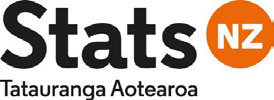 Aide memoire to the Minister of Statistics:
Update on the Long-term Insights Briefing: Data as a driver of national
competitive advantage
Date
Aide memoire to the Minister of Statistics:
Update on the Long-term Insights Briefing: Data as a driver of national
competitive advantage
Date
25 November 2021
Reference number
MM 2152
Priority
M
Purpose
1. Attached to this aide-memoire is a copy of the consultation document for Stats NZ’s proposed
Long-term Insights Briefing (LTIB) topic, for your information.
Background
2. Long-term Insights Briefings are a new requirement for departments under the Public Service
Act 2020 (the Act), and form part of the public sector’s duty of stewardship to identify and look
at future challenges and opportunities for New Zealand.
3. We previously briefed you on our intended topic and high-level overview of the focus areas in
August 2021. At the time you asked to be kept abreast of progress.
4. We are now undertaking public consultation (as required by the Act) on our proposed LTIB
topic, “
Data as a driver of national competitive advantage – fostering improved well-being and
economic growth”. Through consultation, feedback is being sought on:
the proposed topic and focus areas, including whether these are issues the public
would consider valuable for further exploration
whether there are any additional focus areas, opportunities, or implications that should
be considered.
Proposed focus areas of the LTIB
5. The following areas of focus form the structure and proposed content of the LTIB consultation
document:
The future of data
Under this focus area we will explore how data is increasingly being viewed as an
asset ─ both as a driver of public benefit and economic growth. We will also explore
how data powers the development and adoption of new technologies, such as Artificial
Intelligence.
Combining data to create value
This focus area wil look at the power of integrated and linked data to create greater
insight; enabling both social and economic value and helping to drive real competitive
advantage for the New Zealand economy.
The importance of trust and transparency
Under this focus area we explore how trust and transparency are critical foundations
underpinning technology acceptance and adoption. Without this ethical basis, the
benefits of data driven innovation, powered by a free-flowing data system, cannot be
fully realised. Māori data sovereignty wil also be explored as a key component of
trust.
The potential role of government to support the use of data to drive social and economic
wellbeing
This focus area wil explore how the levers of government can be used to effect greater
change and unlock the power of data, including how government can lead by example.
Next steps
6. The consultation period closes on 19 December 2021. Submissions will then be reviewed and
fed into the process for developing the full LTIB.
7. We will provide you with a progress update in early 2022.
8. A copy of this aide-memoire and the consultation document for Stats NZ’s proposed LTIB topic
has also been provided to the Associate Minister of Statistics.
2
Document Outline








































